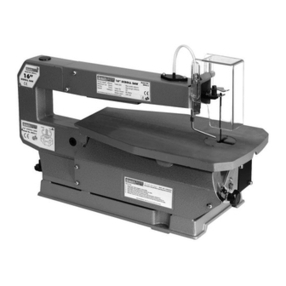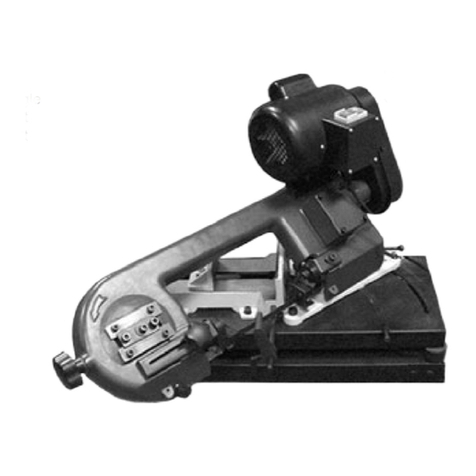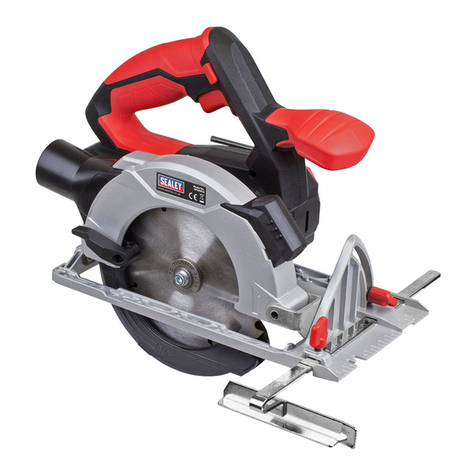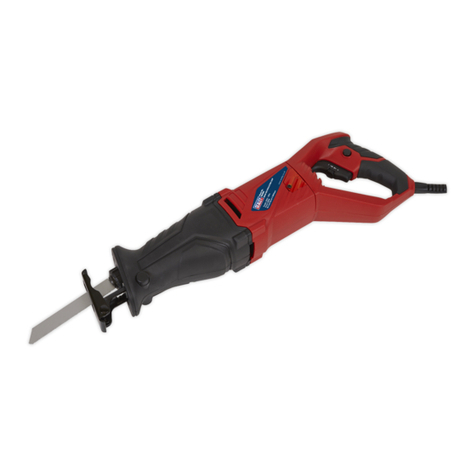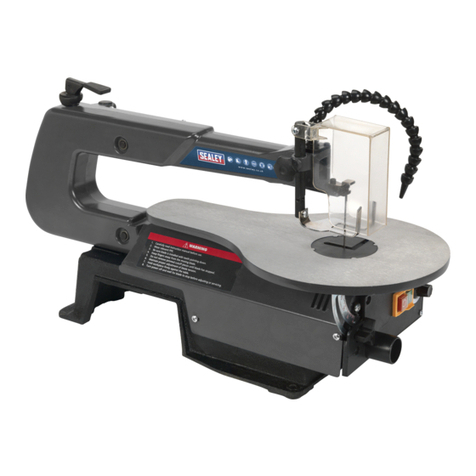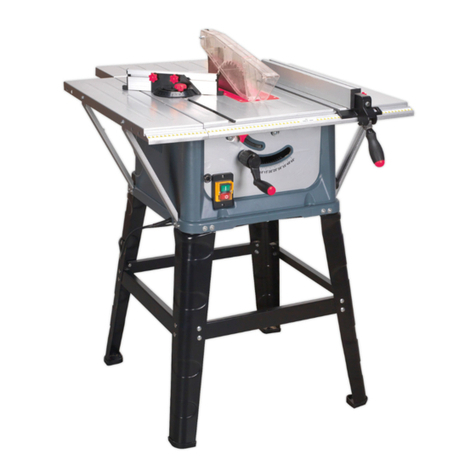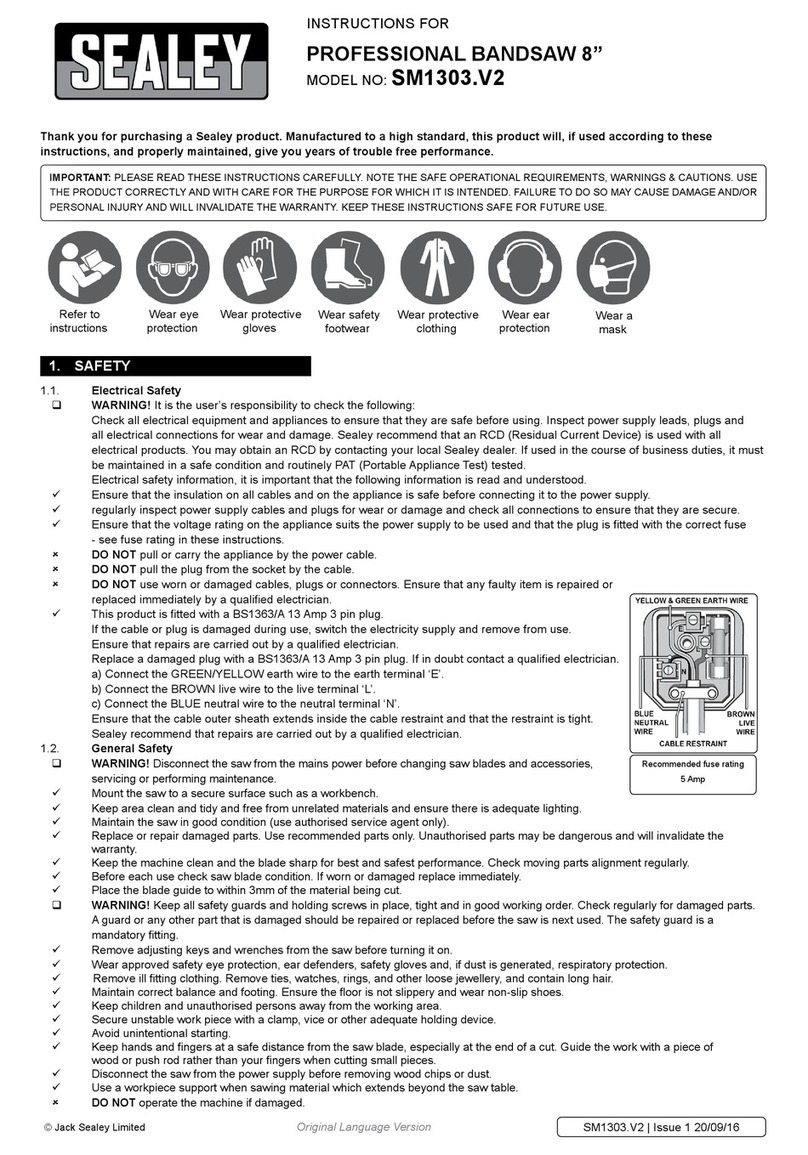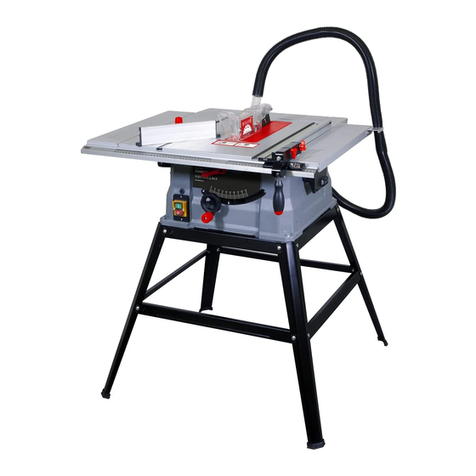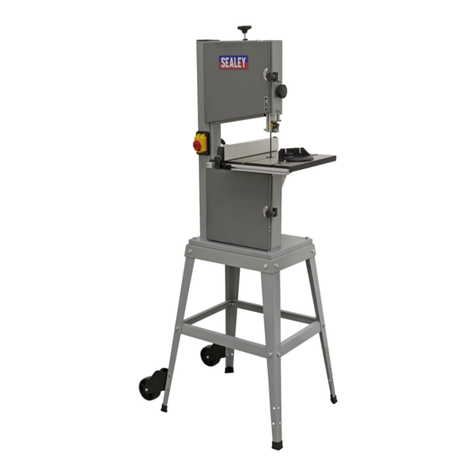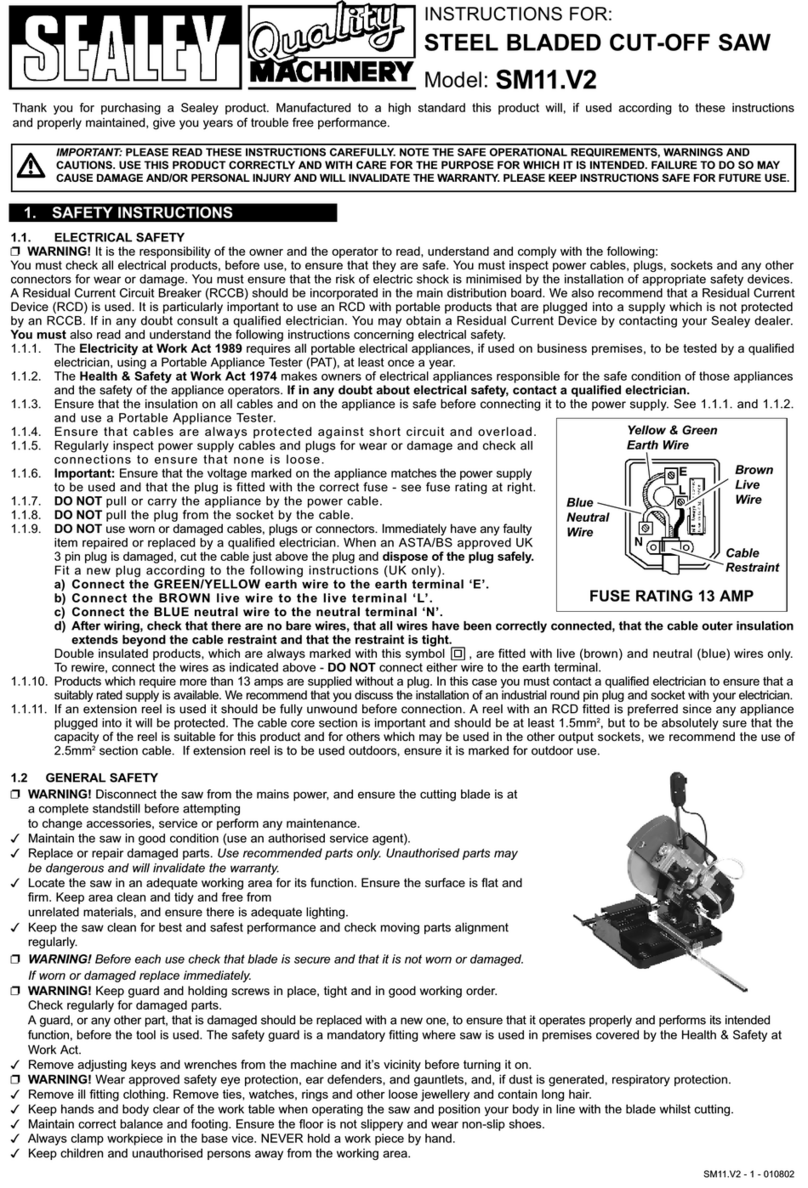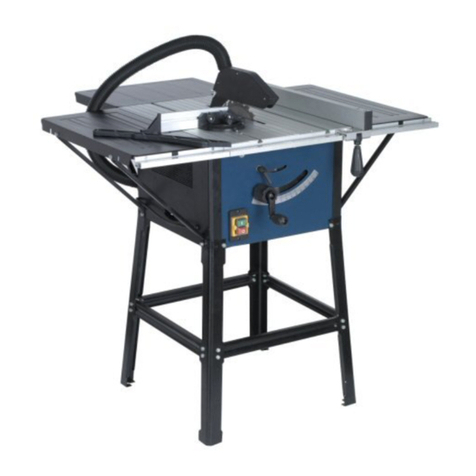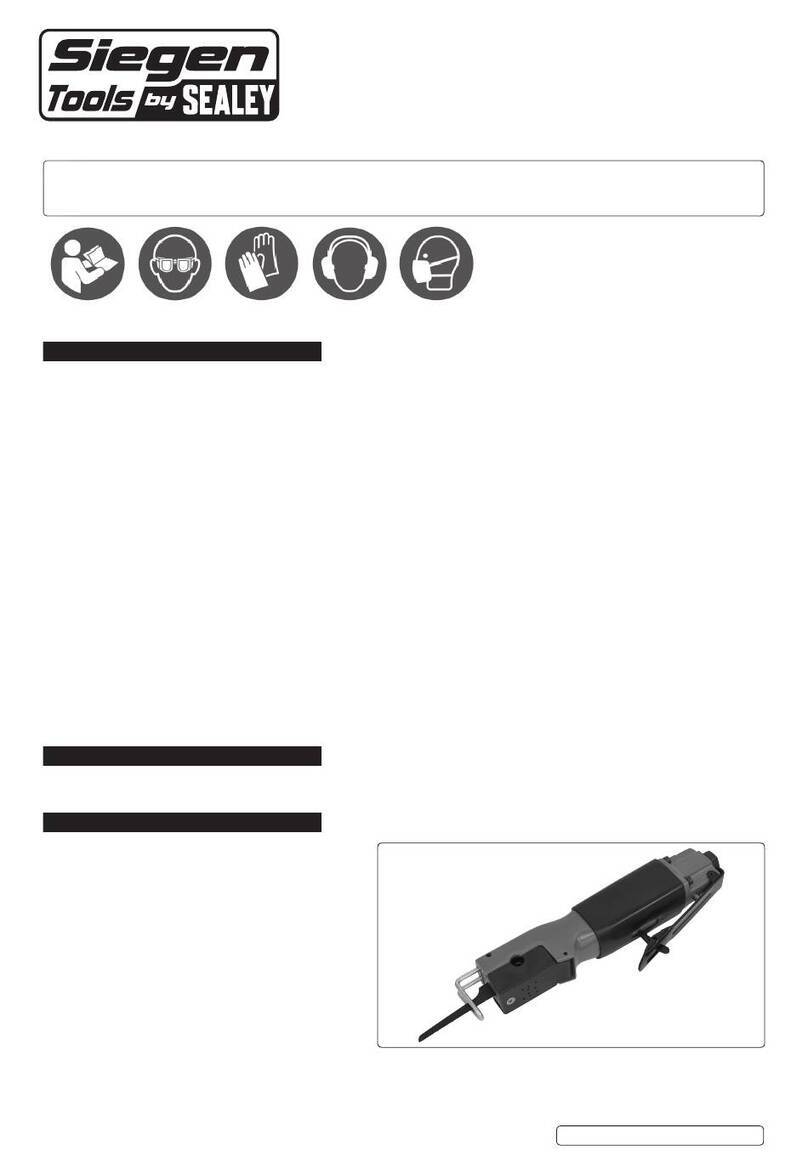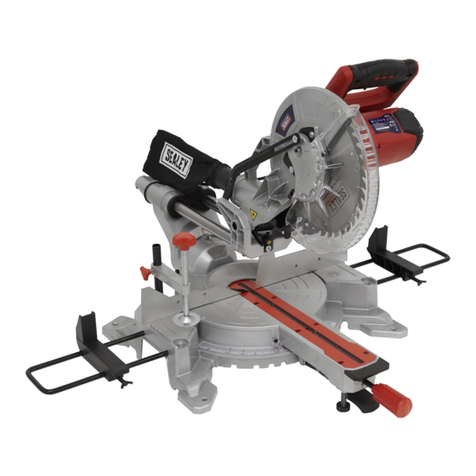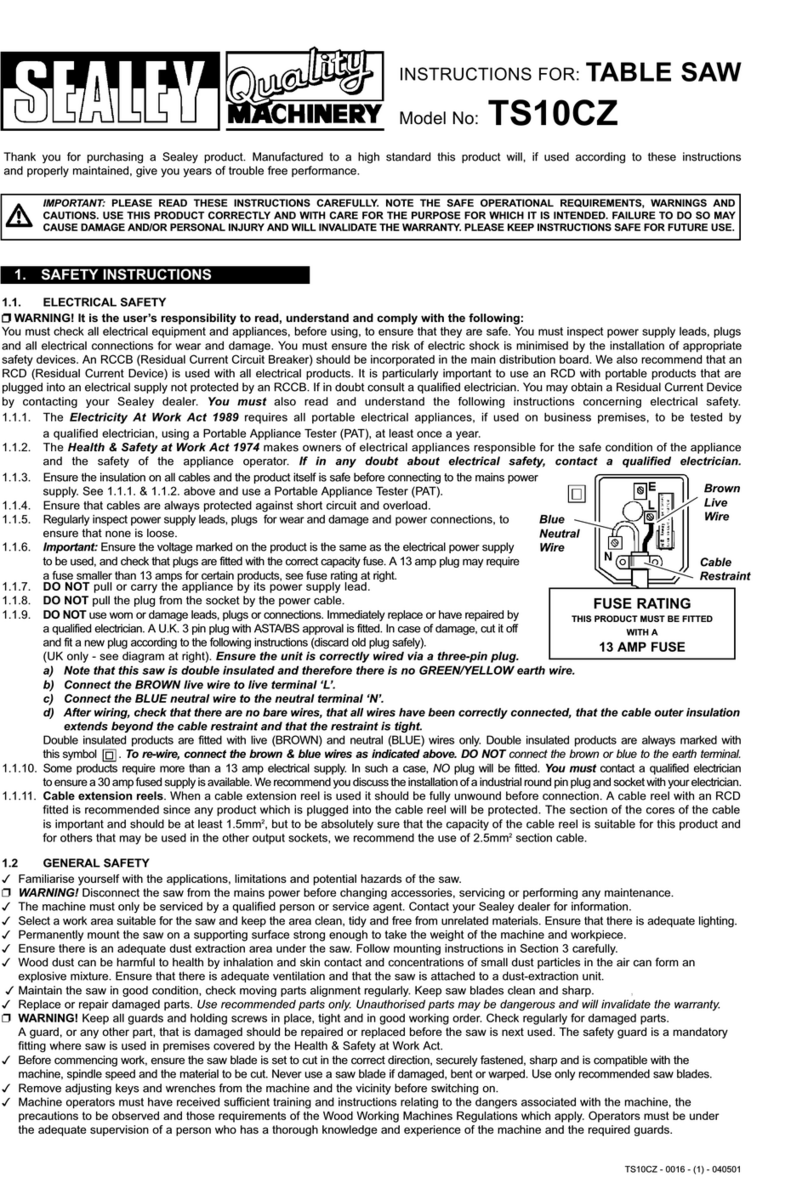1. SAFETY INSTRUCTIONS
Thank you for purchasing a Sealey Product. Manufactured to a high standard this product will, if used according to
these instructions and properly maintained, give you years of trouble free performance.
INSTRUCTIONS FOR:
MINI RECIPROCATING
AIR SAW / NEEDLE FILE
MODEL No: SA347
IMPORTANT: PLEASE READ THESE INSTRUCTIONS CAREFULLY. NOTE THE SAFE OPERATIONAL REQUIREMENTS, WARNINGS
AND
CAUTIONS.
USE THIS PRODUCT CORRECTLY AND WITH CARE FOR THE PURPOSE FOR WHICH IT IS INTENDED. FAILURE TO
DO SO MAY CAUSE DAMAGE AND/OR PERSONAL INJURY AND WILL INVALIDATE THE WARRANTY. PLEASE KEEP INSTRUCTIONS
SAFE FOR FUTURE USE.
2. SPECIFICATION
Suitable for a variety of body shop applications particularly
where space is limited. Use as a cutting saw for panels
or a file for de-burring and shaping metalwork.
Fitted with safety trigger device. Supplied with a starter
pack of blades and files.
Free Speed:..........................7500spm
Stroke: ................................5.5mm
Maximum Cutting Capacity: 1.2mm (Steel & Aluminium)
Air Consumption: ......................... 4cfm
Operating Pressure: ......................90psi
Noise Power: ......................... 89.0dBA
Noise Pressure: .........................78dBA
Vibration: ............................12.2m/s²
Uncertainty: . . . . . . . . . . . . . . . . . . . . . . . . . . 1.85m/s²
Air Inlet Size: ..........................1/4"BSP
Weight:.................................0.5kg
DO NOT operate tool when you are tired or
under the influence of alcohol, drugs or
intoxicating medication.
DO NOT carry the tool with your finger on
the trigger.
DO NOT direct air from the air hose at yourself
or others.
When not in use disconnect from air supply
and store in a safe, dry, childproof location.
WARNING! Ensure Health & Safety, local authority
and general workshop practice regulations are
adhered to when using this equipment.
WARNING! Disconnect from air supply before changing
the blade or file, servicing or performing maintenance.
Maintain the tool in good condition (use an
authorised service agent).
Replace or repair damaged parts. Use genuine parts
only. Unauthorised parts may be dangerous and will
invalidate the warranty.
Use in suitable clean and tidy work area, free from
unrelated materials. Ensure that there is adequate lighting.
WARNING! Always wear approved eye or face and
hand protection when operating the saw.
Remove ill fitting clothing. Remove ties, loose jewellery
and contain and/or tie back long hair.
Wear appropriate protective clothing and keep hands
and body clear of working parts.
Maintain correct balance and footing. Ensure the floor
is not slippery and wear non-slip shoes.
Keep children and unauthorised persons away from
work area.
DO NOT use blades or files that are cracked or deformed.
Ensure that blades and files are clamped tightly to
the airtool.
Check moving parts alignment on a regular basis.
Ensure workpiece is secure before operating
the saw. Never hold a workpiece by hand. Use a
vice or clamps.
WARNING! Ensure correct air pressure is maintained
and not exceeded. Recommended pressure is 90psi.
Keep air hose away from heat, oil and sharp
edges. Check air hose for wear before each use
and ensure that all connections are secure.
Prolonged exposure to vibration from this tool
poses a health risk. It is the employer’s/owner’s
responsibility to correctly assess the hazard and
issue guidelines for safe periods of use and offer
suitable protective equipment.
DO NOT use any power source except an air
compressor.
DO NOT operate the tool near any inflammable
substance or on any container that has held
an inflammable substance.
DO NOT use tool for a task it is not designed to perform.
DO NOT operate tool if any parts are damaged or missing
as this may cause failure and/or personal injury.
DO NOT carry the tool by the hose, or yank the
hose from the air supply.
Original Language Version SA347 Issue: 2(SP) 15/10/13
©Jack Sealey Limited
